Bringing Nechama Leibowitz Into the Classroom

Elana Soroka was a participant in the York University undergraduate Jewish teaching program and the Azrieli Graduate School of Education at Yeshiva University. She currently teaches Middle School Judaic Studies at Netivot Hatorah Day School (Toronto) and is a teacher coach for Lomdei.

Lori Grysman has a BA and teaching certificate from University of Manitoba, and an MA in Hebrew Literature from New York University. She was in the first Gemara class taught to women at Stern College and was profoundly influenced by her studies with Nechama Leibowitz. Lori teaches at Netivot Hatorah, conducts a weekly Torah class for women, and is the Rebbetzin of Ayin L’TZion Zichron Yisroel Congregation.
The written legacy of Nechama Leibowitz, in her gilyonot and books, has served and continues to serve as the basis for Torah study for many serious students of parashat hashavua, Tanakh, and parshanut. Her teaching methodology, as experienced by one of the authors of this article in 1988-89, in her weekly classes in her apartment in Jerusalem and in her weekly shiur at the Gruss Kollel, served as a model for how to teach Torah. Certain elements have been adapted, but we have found that her principle of encouraging independent thinking and individualized feedback gives students in middle school a personal connection with the text and empowers them to continue in their Torah study with positivity and self-assurance. Ultimately, although Nechama held that there were several goals for Torah study, including knowledge, skill development, and understanding for proper adherence to mitzvot, the most significant role of the teacher is to inspire a love of learning Torah.
Engagement
Each year in middle school, we begin with a review of, or introduction to, different kinds of questions or difficulties that may exist in a given pasuk. These include grammatical anomalies, questions about word choice, topic placement, context, or style. After understanding the simple meaning of a given pasuk or excerpt, and being aware of these possible issues with the text, the students are encouraged individually to consider and then write down, on a sticky note, all of the potential questions. The teacher walks among the students, looking at their questions, praising and directing as necessary, and guiding students who need help. Invariably, students experience measures of success and a tremendous sense of enthusiasm to ask and then answer their questions. Before encountering the parshanim, students are encouraged to suggest their own answers. This further increases their engagement, especially when the teacher can add, “That is just like what Rashi said,” or “You are thinking like Ibn Ezra!”
The primary benefit of this approach is that students are required to think on their own. Too often students will wait for their quicker, “brighter” classmates to answer and not make the effort to actively participate. This approach creates a more level playing field for students to be involved and can equalize the diverse classroom. Whereas not everyone has the wherewithal to translate or understand independently, most can confidently be coached toward asking relevant questions. Since students participate simultaneously, all students are involved. The other obvious benefits of this approach are the support felt by the student due to the personalized teacher attention and the resulting engagement and improved self-confidence. The teacher also gets to know the student’s way of thinking, which leads to better opportunities to teach the student. This, of course, demands an investment of time and self-discipline to allow the teacher to have face time with each student and for the students to value this experience without there being a disruptive atmosphere.
An excellent example of this approach is in Leviticus 19:3:
אִישׁ אִמּוֹ וְאָבִיו תִּירָאוּ וְאֶת שַׁבְּתֹתַי תִּשְׁמֹרוּ אנִי ה’ אֱ-לֹהֵיכֶם.
On this one pasuk, our students have found questions that relate to grammar (Why is the noun אִישׁ written in singular while the verb תִּירָאוּ is written in plural?), context (What is the connection between fearing your parents and keeping Shabbat?), repetition (Why does it repeat אֲנִי ה’ אֱ-לֹהֵיכֶם), word definition (How do we fulfill fearing and honoring parents?), and word order (Why is mother written before father here, but in the Ten Commandments, father precedes mother?).
Given that some of this analysis involves comparing this text to a different one, we provide scaffolding by directing them to the parallel text in Exodus 20:12. This pasuk in Leviticus provides a wealth of material for study and students feel a tremendous sense of engagement when studying it.
Rashi
In early Humash education, it is widely accepted that the development of skills, such as proficiency in recognizing Hebrew verb roots, prefixes and suffixes, and cantillation helps to foster independent study skills, and so it plays a valued role in the classroom. The natural extension of this is the development of proficiency in looking critically at Rashi (and later other parshanim) and discerning keywords and patterns. This can help develop a deeper understanding of parshanut both in order to become proficient in translating and identifying Rashi’s questions and answers, as well as in being able to analyze and evaluate in a sophisticated fashion.
There are also consistent themes and guidelines which, when students become aware of, help frame many of the commentaries. One example of this is when Rashi offers multiple explanations for a single text, usually introduced with the phrase davar aher (literally, something else). Rashi will only do this when he is dissatisfied with both explanations, otherwise he would have only cited the one with which he is content. Recognizing the style is an important skill, but it goes beyond the skill as it provides a jumping-off point for a substantial intellectual challenge for students to analyze the explanations and identify the weaknesses of each. For this, as well, we use sticky notes and circulate, sometimes providing scaffolding to help the students discover the flaws Rashi may have been concerned about in each of the explanations. For example, Deuteronomy 1:1 contains a list of what are ostensibly places:
בְּעֵבֶר הַיַּרְדֵּן בַּמִּדְבָּר בָּעֲרָבָה מוֹל סוּף בֵּין פָּארָן וּבֵין תֹּפֶל וְלָבָן וַחֲצֵרֹת וְדִי זָהָב.
Rashi interprets each of these not as a place but as a veiled reference to an event for which Moses is rebuking the people. In his comment on וַחֲצֵרֹת, he offers two interpretations. Rashi first suggests that it refers to the incident with Korah, and then offers an alternative interpretation—introduced by the term davar aher—that it refers to Miriam’s speaking badly about Moses (Numbers 12) and the aftermath of that, in the story of the scouts who acted similarly by bringing negative reports about the Promised Land. By directing the students to Numbers 11:35 and 12:16, our students have been able to discover the weaknesses in both interpretations.
Consistency and world-view
A further opportunity to help build student acumen and appreciation of the study of Torah and parshanut is seeing the consistency of our commentators. Rather than seeing each verse’s explanation as a standalone comment, we help our students to understand that the parshanim have broad worldviews into which their comments fit. This idea is well presented in Rav Mordechai Breuer’s explanation of Rashi’s initial comments on each of the five Books of the Torah, in which Rashi’s comment highlights God’s love for Benei Yisrael. This exercise has lent itself to a class that has independent skills, but it can also work well with greater teacher guidance throughout the year.
Common themes in a commentator’s approach can also be seen when words or phrases that appear in different places in the Torah are explained in a consistent way. This is beautifully evident in Rashi’s explanations of וְיָרֵאתָ מֵּאֱ-לֹהֶיךָ, You shall fear your God, which appears five times in Leviticus (19:13, 19:32, 25:17, 25:36, and 25:43). Juxtaposing the five occurrences of this phrase and seeing Rashi’s emphasis on the importance of morality in our behavior with others teaches a huge lesson about the Torah’s message about the interconnection between our relationships with God and with others. As in the previous examples, we sometimes have students work in groups and other times independently, and we provide the source locations for them to discover the patterns. (We sometimes expand this for stronger groups to include Genesis 20:10, 42:18; Exodus 1:17, Deuteronomy 25:18, and, for a very sophisticated class, Genesis 22:12.)
Other commentators
As students become more comfortable with Rashi, we introduce additional parshanim to enrich the learning experience—to provide a multiplicity of perspectives on how to read the Torah or to create opportunities for analysis and more sophisticated discussion. For example, the numerous comments on וְאָהַבְתָּ לְרֵעֲךָ כָּמוֹךָ (Leviticus 19:18) lend themselves well to this kind of study. Students have been guided to discover what led the parshanim to explain it in the way that they did, which will add to their appreciation of the significance of each word of a given pasuk and its location in context. Students express which perspectives they prefer, both in class and subsequently, on tests. After learning multiple perushim students often ask, “But which one is correct?,” which creates the opportunity to teach the idea that there are 70 faces to the Torah, and that as students of Torah, we are enriched by the multitude of explanations.
Intellectual challenge and passion for Torah study
The ability to guide students to see their Torah study as deep and intellectually challenging, in addition to being a source of religious fulfillment, is an essential element of the teaching experience. For students to develop passion about their Torah studies there must be intellectual engagement. We have found that this individualized method of Socratic style learning, together with discussions in which students’ thoughts and feelings are expressed, enables students to retain a high level of understanding and appreciation of Torah that stays with them as they continue to higher grades. The investment of time required, we have found, outweighs the disadvantage of “covering less,” as it increases the students’ appetites for learning and generates a desire for more, which will happen as the students embark on their paths as lifelong learners of Torah.

Elana Soroka was a participant in the York University undergraduate Jewish teaching program and the Azrieli Graduate School of Education at Yeshiva University. She currently teaches Middle School Judaic Studies at Netivot Hatorah Day School (Toronto) and is a teacher coach for Lomdei.


From The Editor: Winter 2025
It is one of the oldest literary collections ever written and still very much in circulation. Public readings (and celebrations) of its text are practiced in nearly every synagogue in the world in a regular, fixed cycle. It has been analyzed and studied by religious luminaries, academic scholars, and lay people, and has been studied and taught more times than we can count, with hundreds if not thousands of published commentaries. It plays a central role in all of our lives. One would think that by now we would have a pretty clear idea of what content from Tanakh should be taught and how it should be approached pedagogically at various age levels. And yet, a mountain of anecdotal evidence reveals that there is a huge range in what is taught, why it is taught, and how it is taught.

Tanakh Hats for Meaning Making: A Multi-Perspective Approach to Biblical Text Study
In our ongoing quest to enhance Tanakh education, we’ve developed a fresh approach that energizes both teachers and students while promoting diverse interpretations, critical thinking, and collaborative learning. Inspired by Edward de Bono’s Six Thinking Hats, this method encourages learners to view Tanakh texts from multiple perspectives, offering deeper understanding and fostering connections between foundational Jewish texts and modern life. The Tanakh Meaning Making Hats (TMM Hats) approach equips students with various interpretive tools to explore familiar perspectives and discover new ones, building understanding through both familiar and novel frameworks. This method, grounded in constructivist learning theory, enables students to construct knowledge actively, allowing them to examine texts from varied angles.

From Consumption to Production: Equipping Students to Create Torah
In the realm of Tanakh education, there is a tendency to focus on the consumption of Torah knowledge, where students engage in the study, understanding, and analysis of sacred texts. While amassing a critical base of knowledge is undeniably essential, I believe that shifting from students-as-consumers to students-as-producers—in which students not only absorb the teachings but also create and contribute their own interpretations and insights that can be shared publicly—is equally essential. How can we teach students to produce a deep analysis of Torah and not just consume others’ commentary? How do we encourage students to think for themselves while teaching other valuable lessons in the process?

Innovating Teaching Tanakh
What I observed one day in my visit to an English Language Arts (ELA) classroom last year opened my mind to completely new ways of teaching Tanakh, leading to greater student engagement.I work at a pluralistic elementary school that emphasizes growth mindset and continued development for each educator. One specific policy that helps educators learn from each other is the requirement to visit at least two other classrooms every semester. This routine fosters a genuine culture of professional growth, where teachers share ideas, observe varied teaching methods, and offer constructive feedback. I’ve always found these observations beneficial, but one visit left a lasting impact on my approach to teaching Tanakh. Stepping into Mrs. Michelle Petrova’s 6th grade ELA classroom, I was greeted with an incredibly vibrant atmosphere.

Teaching the Halakhic Sections of the Torah
Much of the discussions we find about teaching Humash focus on the narrative portions—Genesis, the story of the Exodus, the wanderings in the wilderness. To a large extent that makes sense, as they provide students with their origin stories—so critical for building the foundations of identity—and are inherently interesting, as stories tend to be. That being said, there is another half of the Torah, whose nature is primarily legal. While some skip it intentionally or somehow “don’t get around to it,” for others it is no less important to teach, even though the content often doesn’t lend itself easily to grab and hold the students’ attention. As with any teaching, we must first identify what we want to achieve before we can think about how we want to do it.
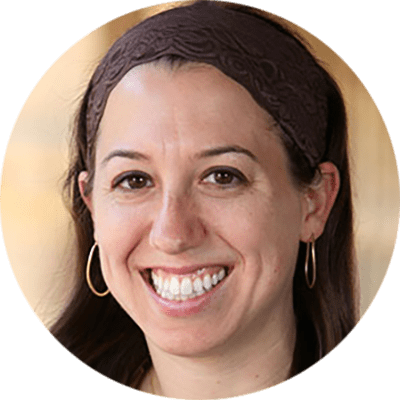
Teaching Tanakh: A New Perspective on Pedagogy
As many teachers of Tanakh know, the Tanakh classroom serves as a crucible for interpreting sacred texts, particularly in theologically and denominationally diverse day schools, camps, and beit midrash settings. The question I wish to explore here is: how do Jewish educators navigate the complex landscape of multiple orientations towards Tanakh that they might find in the seats of their classroom and make sure to empower all their students as interpreters? Central to my own Tanakh teaching, at almost every grade level, in almost every type of day school context, is the realization that my students don’t read Tanakh according to the same orientations or literacy practices, but it would be helpful if they did—at least for the duration of my class.
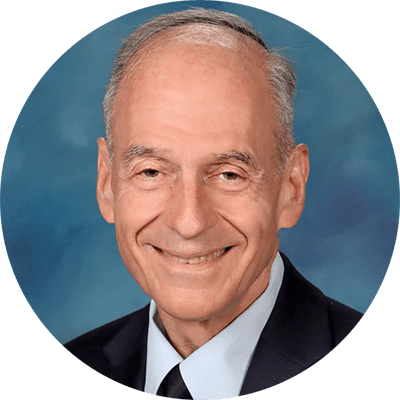
Tanakh Study and Reader Response
“My students insist on translating every pasuk (verse) into English and then using their translation to answer the questions. How can I get them to work from the makor (original text)?”“When I give in to their learned helplessness and teach them an interpretation, they can’t identify the problem in the pasuk that the interpretation comes to solve, and then they get stuck on the one understanding I presented and won’t consider an alternative. How can I help them think for themselves?” “I want my students to identify with the avot (patriarchs) and imahot (matriarchs) and learn from their example. But they somehow can’t relate to them as role models. What am I doing wrong?”Sound familiar? For years these complaints were a constant refrain from my Tanakh-teaching colleagues.
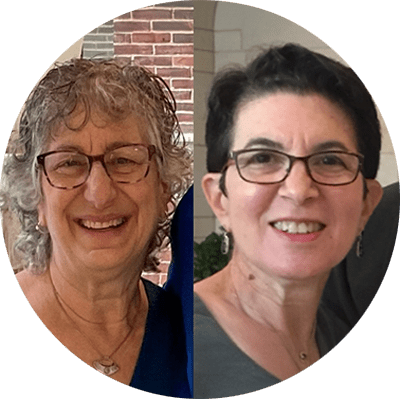
Vision, Lenses, and Focus: Bringing Clarity to Tanakh Curriculum with Standards
Any Tanakh text, whether narrative or legal, contains an abundance of ideas, elements, and complexities, and has the potential to raise countless questions. How does a school community decide which of them to pursue?Nechama Leibowitz, quoted by Shmuel Peerless in To Study and to Teach: The Methodology of Nechama Leibowitz, wrote that educators have……to decide what to leave out and what topics should not be touched, because it is pointless to tackle a number of different topics and problems superficially or incidentally in a chapter. It is preferable to concentrate on just a few topics, but in depth (p. 15). Standards serve as powerful tools for deliberating about a vision for Tanakh education and for shaping Tanakh curriculum once the school’s vision is clear.

Teaching Tanakh to Weaker Students
In my roles as a Tanakh teacher and an instructional coach, my goal is to inspire Tanakh students to become engaged, proud, and even passionate Jews, fluent in Jewish literacy and deeply committed to the future of Jewish education and community. This goal is daunting under the best of circumstances; when teaching Tanakh to weaker students, it becomes more so. In this article I will outline some of the most ubiquitous challenges that arise from teaching Tanakh to weaker students and offer suggestions for navigating them based on my own experience as well as conversations with other educators and research from the field. I believe that navigating these challenges requires both modifications in practice and shifts in mindset, and I will outline each of them.
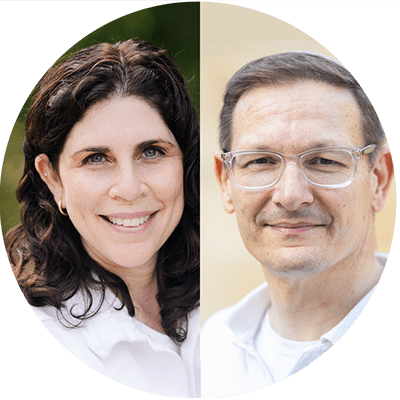
Student-Centered Learning in the Tanakh Classroom
For the past decade, educators have been using the term student-centered learning (SCL) but still finding it tricky and challenging to apply to the Tanakh classroom for a variety of reasons. One is the amount of time teachers must dedicate not only to teaching content but also to developing textual reading skills. Another is that teachers might feel reluctant to engage in a pedagogy they feel allows for too much free thinking and not enough respect for the mesorah, classical commentators, and tradition in general. Here we offer tips and strategies for how to introduce SCL into the Tanakh classroom in large and small ways. Differentiation and Social-Emotional Learning Are you differentiating in your classroom? Great! That’s one time-tested way to employ SCL in the Tanakh classroom.

Outside the Box: A Values-Based Approach to Parashat Hashavua
Tanakh in dialogueWhat position does the Tanakh occupy in the life of an early teen? For many, the Tanakh resides in the mental box into which school is commonly placed—a box of academic pursuits, Hebrew language and grammar, Jewish history and Biblical knowledge. There is nothing innately wrong with this, to the contrary, Tanakh study certainly can and does involve these important elements. But a missed opportunity arises when compartmentalisation precludes Tanakh from forming dialogue with the other “boxes” that rise to prominence in the early teen years.Early teenagehood is often marked by questioning and exploration as students begin a journey of seeking to understand that which may have previously gone unquestioned.

Building Tanakh Skills One Step at a Time With Manipulative Materials
“Give a man a fish,” the saying goes, “and you feed him for a day. Teach a man to fish and you feed him for a lifetime.” At Netivot, we have developed a Tanakh program that gives each child the personalized gift of feeding himself for a lifetime. The Montessori method is predicated upon the idea that each child, if provided developmentally appropriate opportunities, will inherently learn and grow and master at each phase of development according to his own individual needs. For this reason, in our classrooms, the expectation is not for children to memorize translations of text “chorally,” but rather to develop individually the skills to translate for themselves. Using key elements of the Montessori method, our students build a series of skills that allow them to tackle pesukim independently.
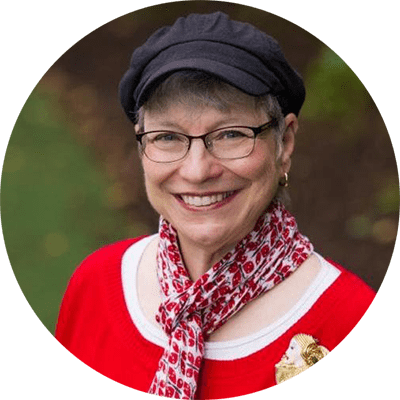
Opening the Middle School Window to Midrash
A number of years ago, when I was teaching the sections in Genesis about Abraham and Sarah to a girls’ middle school class, one of my students raised her hand and said, “I don’t like how much is missing in the Torah.” I asked her what she meant and she replied, thinking like a typical middle schooler, “Like, what did Abraham and Sarah talk about at night when they were just sitting around their tent?” After responding facetiously that Sarah probably asked Abraham what he thought about her new burka, I took the moment to answer the class seriously. This was a wonderful opportunity to deeply introduce my students to midrash as one way to fill in the “blanks” in the Torah text, to delve into the “spaces” in the text, and to teach us moral messages with which to inform our own lives.
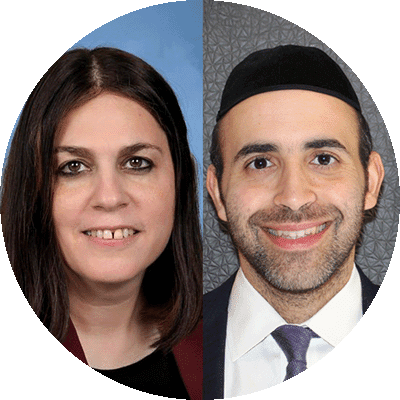
The Barkai Method for Teaching Humash
In the introduction to his book Who Knows Twelve, Rabbi Berel Wein explores a troubling phenomenon: the growing disconnect between the Jewish people and their sacred texts. Whatever the causes for its decline may have been, many Jewish day schools today are attempting to reinvigorate the study of Tanakh, recognizing its fundamental role in Jewish identity and education. Maimonides codified the necessity of studying Tanakh in Hilkhot Talmud Torah (1:7), asserting that it is a crucial component of Jewish life. Today, there is a growing recognition of the need to revive these ancient texts, which hold profound significance for Zionism, community, ethics, spirituality, identity, and much more. One noteworthy example of this revival is the Barkai educational system, developed in Israel by Rav Dan Be’eri more than 40 years ago.
Reach 10,000 Jewish educational professionals. Advertise in the upcoming issue of Jewish Educational Leadership.







Empowering students! Torah learning model clearly and convincingly presented. Highly recommended!